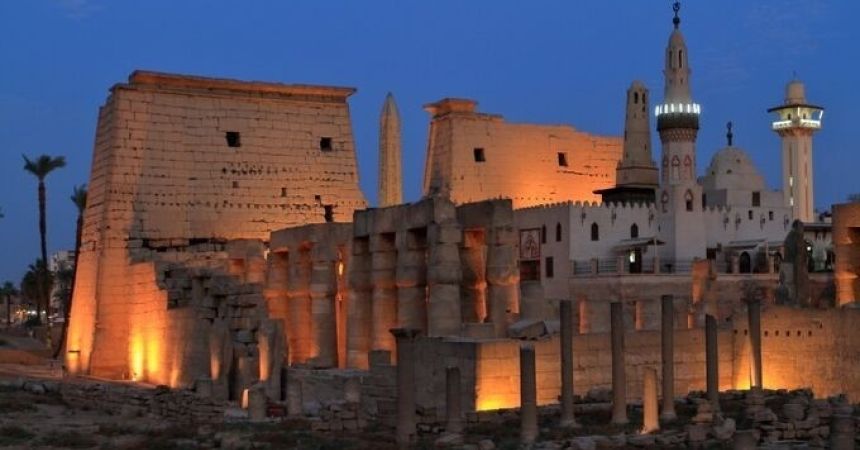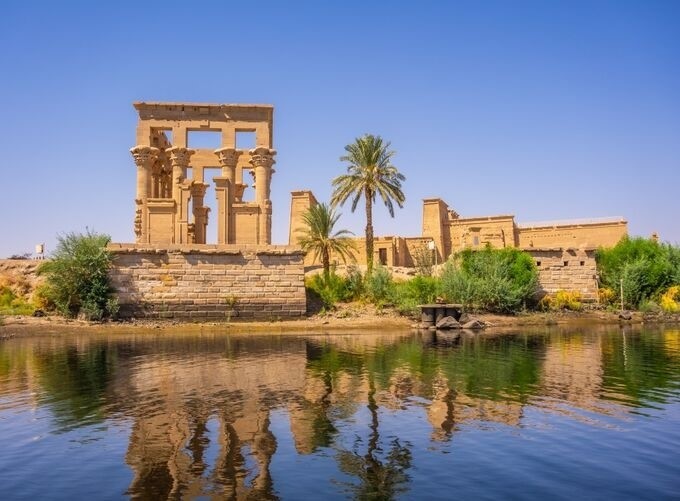
Guide to Egypt’s Iconic Temples and Tombs
Egypt is a treasure trove of ancient wonders, featuring some of the most iconic temples and tombs in the world. From the majestic Pyramids of Giza to the elaborate temples of Karnak and the burial sites in the Valley of the Kings, each site is steeped in history and offers a glimpse into the rich culture of ancient Egypt. However, navigating these incredible sites can be overwhelming, especially for first-time visitors. This guide will provide you with all the tips and tricks you need to visit Egypt’s iconic temples and tombs like a pro.
Planning Your Trip: When and Where to Go
Best Time to Visit Egypt
Weather Considerations: The ideal time to visit Egypt is during the cooler months, from October to April. During this period, temperatures are more manageable for exploring outdoor sites.
Avoiding Crowds: If possible, plan your visit during the shoulder seasons (October-November and March-April) to avoid the peak tourist crowds and enjoy a more leisurely experience.
Key Sites to Include
When planning your Egypt itinerary, consider including the following must-visit temples and tombs:
- Pyramids of Giza
- Sphinx
- Valley of the Kings
- Temple of Karnak
- Temple of Luxor
- Temple of Hatshepsut
- Abu Simbel Temples
- Temple of Philae
Understanding Egyptian History and Culture
The Significance of Temples and Tombs
Temples: In ancient Egypt, temples were constructed as places of worship and to honor the gods. They were designed to facilitate rituals and ceremonies, often adorned with intricate carvings and hieroglyphs that tell the stories of the deities and the pharaohs.
Tombs: Tombs served as final resting places for pharaohs and nobles. The burial practices of ancient Egyptians were elaborate, reflecting their beliefs in the afterlife. Many tombs are decorated with detailed wall paintings that provide insights into the lives and customs of those buried within.
Researching Ancient Egypt
To enrich your experience, consider reading about ancient Egyptian history, mythology, and architecture before your trip. This background knowledge will enhance your understanding of the sites you visit.
Essential Tips for Visiting Temples and Tombs
Start Early
Avoiding Crowds: Arriving at popular sites early in the morning allows you to explore with fewer crowds. This is especially important for places like the Pyramids of Giza and the Valley of the Kings.
Best Light for Photography: The early morning light is perfect for photography, enhancing the beauty of the temples and tombs.
Dress Appropriately
Modest Clothing: Dress modestly when visiting religious and historical sites. Lightweight, breathable clothing is recommended, along with a hat and sunglasses to protect against the sun.
Comfortable Footwear: Wear comfortable shoes, as you’ll likely do a lot of walking and climbing. Consider closed-toe shoes for added protection in dusty or rocky areas.
Hire a Local Guide
In-Depth Knowledge: A knowledgeable guide can provide invaluable insights into the history and significance of the sites you visit, enhancing your overall experience.
Navigating Complex Sites: Some sites can be overwhelming due to their size and complexity. A guide can help you navigate and highlight the most important areas to explore.
Use Official Entrances and Services
Avoid Scams: Always enter through official entrances and use authorized guides to avoid scams or unlicensed individuals. This ensures that you receive accurate information and a safe experience.
Ticket Purchase: Purchase tickets at official booths, and keep your tickets handy as you may need to show them at various checkpoints.
Be Mindful of Photography Rules
Respectful Practices: Always ask for permission before taking photographs of people, especially in rural areas. Some sites may have restrictions on photography, particularly in tombs where flash photography is prohibited.
Capture Memories: Take plenty of photos, but also take moments to absorb the beauty of the sites without a camera.
Iconic Temples and Tombs to Visit
Pyramids of Giza
Overview: The Pyramids of Giza are the most famous ancient monuments in Egypt. The Great Pyramid of Khufu, along with the Pyramids of Khafre and Menkaure, stand as a testament to the architectural ingenuity of ancient Egyptians.
What to Do:
- Explore the pyramids up close and learn about their construction techniques.
- Consider a camel ride around the Giza Plateau for a unique perspective.

The Sphinx
Overview: The Great Sphinx, with the body of a lion and the head of a pharaoh, is one of the largest and oldest statues in the world. It guards the Pyramids of Giza.
What to Do:
- Take time to appreciate the scale and craftsmanship of the Sphinx.
- Learn about the myths and legends surrounding this iconic monument.
Valley of the Kings
Overview: The Valley of the Kings is the burial site of many pharaohs from the New Kingdom, including Tutankhamun. The tombs are adorned with stunning wall paintings and carvings.
What to Do:
- Choose a few tombs to visit; highlights include the tombs of Ramses II and Tutankhamun.
- Consider hiring a guide to explain the significance of the artwork.
Temple of Karnak
Overview: The Karnak Temple complex is one of the largest religious structures in the world, dedicated to the god Amun-Ra. It features massive columns, towering obelisks, and sacred lakes.
What to Do:
- Spend several hours exploring the various sections of the temple complex.
- Attend the Sound and Light Show in the evening for a unique experience of the temple’s history.
Temple of Luxor
Overview: Located near the Nile River, the Temple of Luxor was built to honor the god Amun and celebrate the reign of Pharaoh Amenhotep III. Its grand entrance features massive statues and impressive columns.
What to Do:
- Visit the temple at sunset for breathtaking views.
- Explore the nearby Luxor Museum for a deeper understanding of the region's history.
Temple of Hatshepsut
Overview: This mortuary temple is dedicated to Hatshepsut, one of the few female pharaohs of ancient Egypt. The temple's architecture is striking, with three terraced levels and beautiful gardens.
What to Do:
- Take time to appreciate the intricate carvings and stunning views from the temple.
- Learn about Hatshepsut's reign and her unique position in history.
Abu Simbel
Overview: Tour to temples of Abu Simbel, carved into the mountainside by Ramses II, are among Egypt's most magnificent monuments. The Great Temple features four colossal statues of the pharaoh.
What to Do:
- Take a guided tour to fully appreciate the history and significance of the site.
- Spend time exploring the smaller temple dedicated to Queen Nefertari.
Temple of Philae
Overview: The Temple of Philae is dedicated to the goddess Isis and is located on Agilkia Island in the Nile. The temple is known for its beautiful architecture and serene surroundings.
What to Do:
- Take a boat ride to reach the temple, enjoying the scenic views along the way.
- Explore the temple complex and learn about the mythology surrounding Isis.
Cultural Etiquette When Visiting Temples and Tombs
Dress Modestly
When visiting religious and historical sites, it's important to dress modestly. This includes covering shoulders and knees, as well as avoiding overly revealing clothing. Women may want to carry a light scarf to cover their heads when entering certain areas.
Be Respectful
Always be respectful of the sites you are visiting. This includes not touching or leaning on ancient artifacts, speaking quietly, and being mindful of other visitors.
Engage with Local Guides
If you have the opportunity, engage with local guides and listen to their stories and insights. They can provide valuable context and enhance your understanding of the sites.
Practical Tips for Visiting Temples and Tombs
Hydration and Snacks
Exploring ancient sites can be physically demanding, so it’s important to stay hydrated. Carry a reusable water bottle and snacks to keep your energy up during your visits.
Cash and Currency
While many places accept credit cards, it’s advisable to carry some cash for smaller purchases, such as entry fees and local souvenirs. Egyptian pounds (EGP) are the local currency.
Transportation
Public transportation options like buses and trains are available, but consider hiring a private guide or joining a tour for convenience and efficiency, especially when visiting multiple sites.
Weather Considerations
Egypt can be extremely hot, especially during the summer months. Plan your visits to outdoor sites for the cooler parts of the day, such as early morning or late afternoon.
Your Ultimate Guide to Egypt Holidays
Visiting Egypt’s iconic temples and tombs is a journey through time, offering a glimpse into the grandeur of ancient civilization and the fascinating history of the Pharaohs. By following this guide and embracing the tips and recommendations provided, you can navigate these remarkable sites with ease and appreciation.
As you explore the Pyramids of Giza, the temples of Luxor, and the tombs of the Valley of the Kings, take the time to absorb the beauty and history surrounding you. Engage with local guides, respect the cultural significance of the sites, and create unforgettable memories that will last a lifetime.



